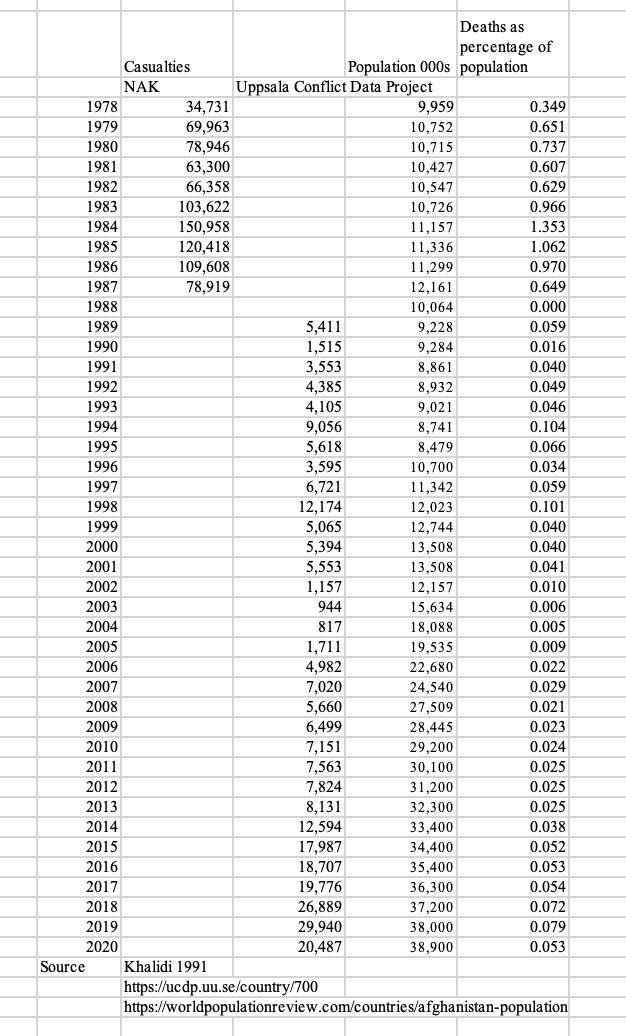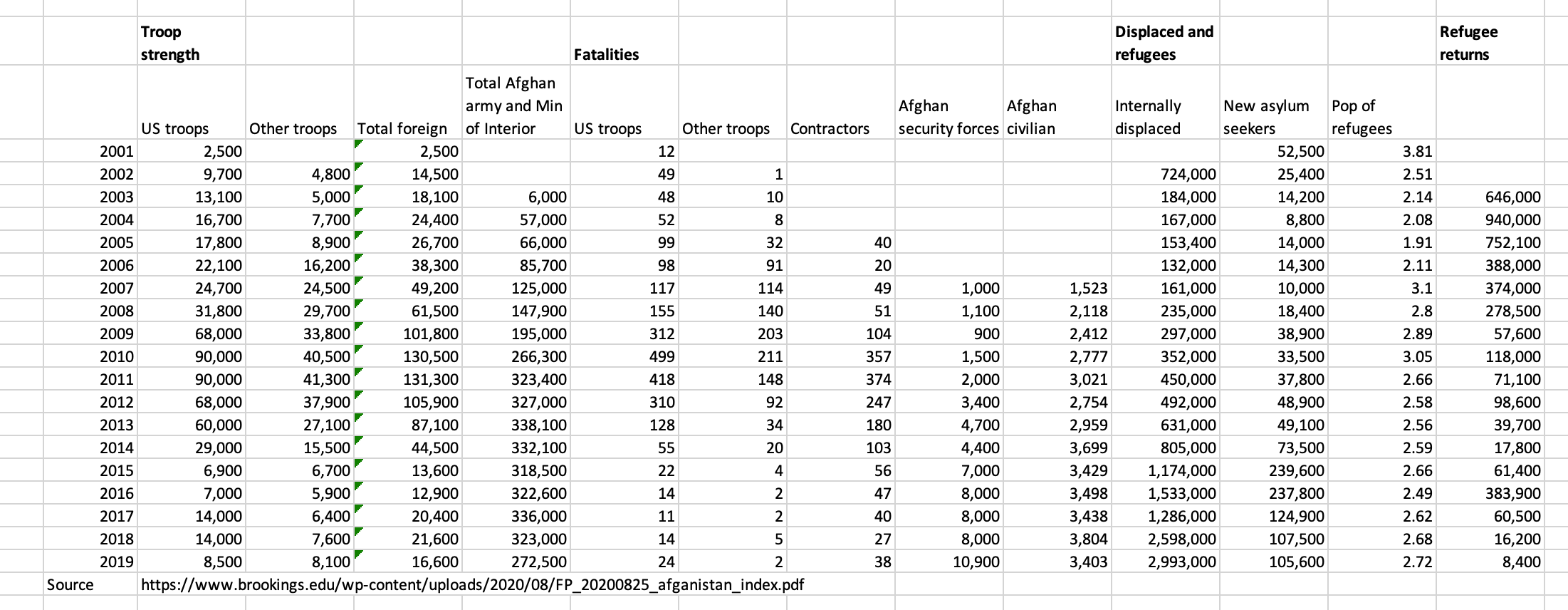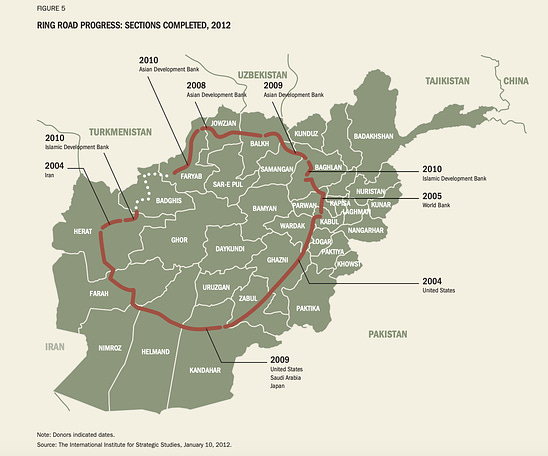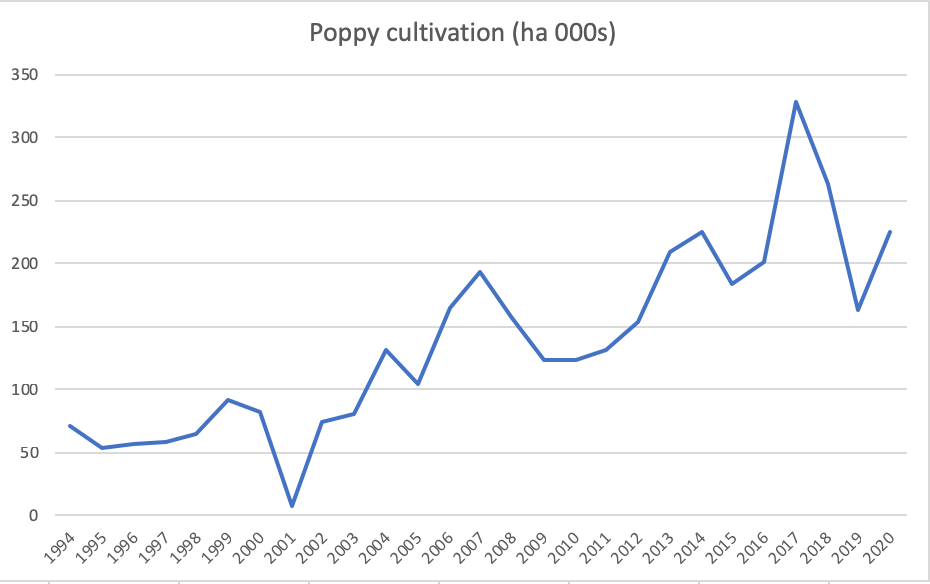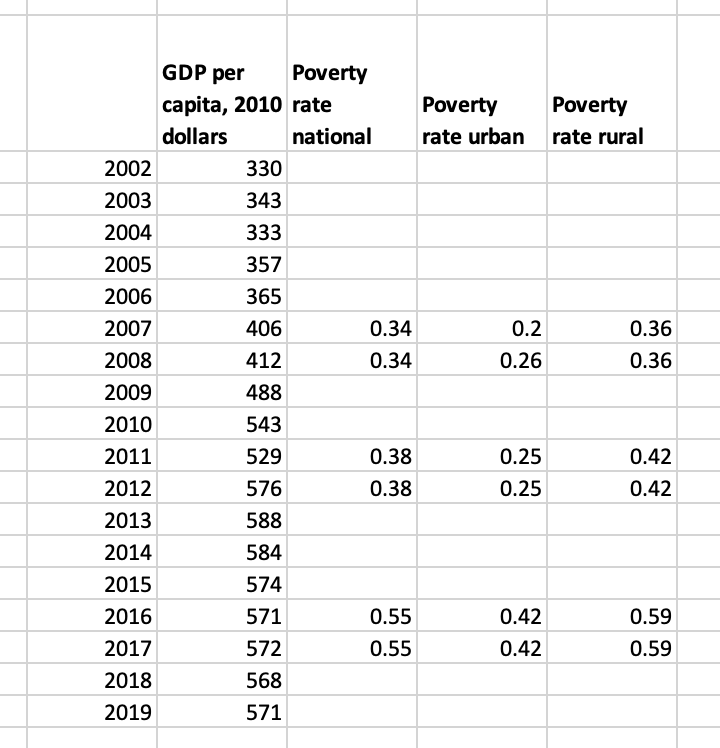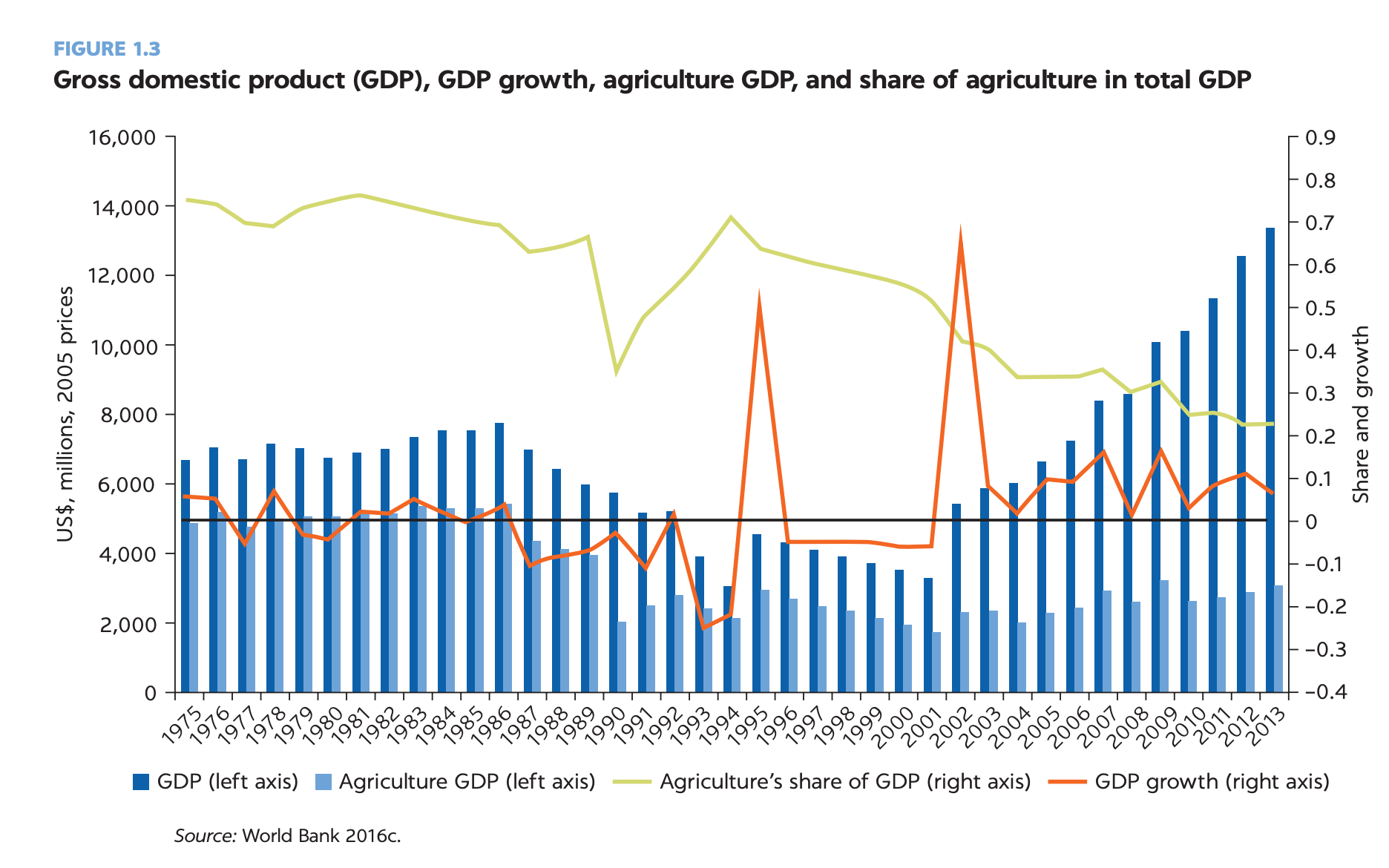What do you do if you can see the end of your world approaching? Do you flee? Do you resign yourself? These questions were jarred into focus the other day by reports of desperate professional-class Afghans bracing for the likely return to power of the Taliban. For a large part of my adult life, the Western intervention in Afghanistan has been in the background. There was a time at Yale in the early 2010s when I was routinely teaching classes full of aid workers and veterans from Afghanistan. For a while, Stan McChrystal was a colleague. David Petraeus came for lunch. Though I had been fascinated with military history all my life, I had never been that close to a war. When you see the numbers it becomes easier to understand why the footprint of the Afghan war in American society was as large as it was. According to a widely cited shock statistics, the twenty year intervention in Afghanistan has cost the USA over $2.2 trillion dollars.
That is a staggering amount, but facing the imminent end of this twenty year engagement, I realized that I knew woefully little about the overall impact of Western intervention on Afghanistan, its economy and society. Ahead of the Western retreat, it seems that the very least one can do, is to take stock and sum up some basic facts. I only scratch the surface here.
Grasping for some perspective it makes sense to put the last twenty years of Western intervention in Afghanistan in the context of a century of contested and often violent struggle over the country's modernization. On that earlier history, Humanitarian Invasion, by Timothy Nunan is a fascinating read. The revolution of 1978 and the Soviet intervention followed by Western sponsorship of the resistance turned Afghanistan into a battlefield in the late Cold War. It was a conflict of staggering proportions.
The figures from Khalidi for the Afghan-Soviet war are conservative. They cover only the period 1978-1987. They add up to a total death toll of 870,000. There are not unreasonable estimates that put overall mortality at twice that level. The scale of this violence in the 1980s dwarfs anything that followed. In 2019, 0.078 of the Afghan population were killed in clashes between government and Taliban forces. In 1984, a staggering 1.35 percent of the Afghan population fell victim to the war in a single year. In relation to population that is 19 times worse than the current casualty rate.
I do not cite these figures to excuse or relativize the violence that has followed. More people were killed in Afghanistan in 2019 than at any time since the end of the Afghan-Soviet war. More than during the conquest of the country by the Taliban during the late 1990s. But, the scale of the 1980s cataclysm is staggering. The losses, at between 7 and 10 percent of total prewar population, are in the ball park of those suffered in Eastern Europe and the Balkans in World War II. Only very big wars with large civilian casualties have significant demographic impact. In the 1980s, Afghanistan’s population stopped growing.
By comparison, the warlord and Taliban periods of the 1990s were relatively less lethal. That does not mean that they were good times. Not for Kabul, which in the 1990s was sucked into the fighting for the first time. Not for those Afghan women who had participated in the emancipatory politics and culture of the cities and found themselves living under the misogynistic regime of the Taliban.
Going by the mortality data, the Western intervention in Afghanistan after 2001 at first continued the downward arc of violence. Measured in terms of the death toll, 2003 and 2004 were the most peaceful years that Afghanistan has enjoyed since the 1970s. But from 2006 the intensity of Taliban resistance surged and the Western alliance responded. Between 2009 and 2013, the US and its allies mounted something akin to a full-scale occupation. In 2011 the combined strength of the US, allied and Afghan forces deployed against the Taliban insurgency peaked at over 450,000.
The casualties were never on a scale to compare with the Afghan-Soviet war. A better measure of the disruption is the internal displacement of population, which surged along with the scale of troops deployed. Beginning in 2014 there was a wave of asylum seeking abroad, which, in 2015 in Europe, merged with the “Syrian” refugee crisis.Then, as the draw down of Western military forces began in earnest and the Taliban mobilized, the scale of the fighting widened dramatically. The Afghan security forces began to take very serious casualties and internal displacement surged alarmingly.
Seen from high altitude, the pattern of economic development in Afghanistan over the last twenty years follows a similar path. At first, Western aid was surprisingly small-scale and modest in conception. It built to a sudden crescendo in the early 2010s at the time of the US surge and has ebbed since.
Given Afghanistan’s huge development challenges, one might think that economic development would have top priority. In fact, the ratio of military to civilian development spending was in the order of ten to one. But, the scale of Western involvement is staggering, nevertheless. In many years Western aid spending exceeded the measured size of Afghan GDP. The figures have a surreal, Alice in Wonderland quality. How could you fit so much aid money into such a small economy? Where did the money go?
One obvious answer is that tens of billions were swallowed up by corruption and the grey economy. Wealthy Afghans became large property owners in the Gulf states. So crass are these divides that they call into question the very notion of an Afghan national economy as we normally understand it. All statistics are constructs. GDP is a particularly elaborate construction. And in the case of Afghanistan it obscures the fact that a national economy as we conventionally understand it, barely exists. On the ground there are “economies” of urban merchants and handicrafts and communities of hard scrabble farmers, but they did not constitute the kind of integrated circular flow as which we imagine a modern economy. Achieving a circular flow was actually a strategic issue in Afghanistan. A huge amount of effort went into the project of completing the ring road that notionally enables the circulation of goods and people around Afghanistan. The ring never closed.
Source: SIGAR
Afghanistan’s most valuable crop is illegal opium. It does its best to show up nowhere in anyone’s accounts. But there can be little doubt that since the early 2000s, cultivation has progressively increased.
Source: UNODC
At farm-gate prices, in 2017 opium generated about $ 1.5 billion in income for Afghan peasants. The fortunes of the countryside fluctuate with heroine prices in the West.
For what they are worth, data for Afghanistan’s GDP per capita show a surge between 2000 and 2014. GDP per capita was driven upwards by injections of foreign spending and the restoration of ordinary farming and commerce, as security was restored. Since 2014, as aid dwindled and violence returns, GDP has stagnated. With a rapidly growing population, that means that GDP per capita is shrinking.
Source: Afghanistan Index
These data are clearly hedged by uncertainty. But other markers of modernization track the same curve.
Source: Afghanistan Index
Life expectancy has increased. This is driven by a rapid fall in infant mortality and striking life expectancy gains for women, presumably, through much better maternal care. Whereas in 2000 Afghan men lived longer than women, now Afghanistan has the more normal pattern of women outliving their menfolk.
From 30,000 in 2003, the number of students enrolled in Universities in Afghanistan has risen to more than 180,000. In 2018, there were 49,000 female students.
Source: Afghanistan Index
Like everyone else, Afghans are addicted to their cell phones. There are enough cell phone subscriptions for more than half the population. Cell phone providers are one of the few parts of Afghanistan’s modern economy that have truly flourished. To run phones, people need power. Electricity consumption per capita has gone up approximately four times since the 2000. To feed that growing demand, Afghanistan has expanded its own generating capacity. But, increasingly, Afghanistan has come to rely on power imports - from Uzbekistan, Iran and Turkmenistan - which account for almost 80 percent of its power needs. The inflow of aid covers Afghanistan’s yawning trade deficit.
Source: Afghanistan Index
But for all the recorded signs of economic growth and modernization, there has been no success in poverty eradication. In fact, as per capita income increased, so did the rate of poverty. And in recent years, as growth has ground to a halt, the poverty rate has surged. Today, over half of Afghanistan’s population are officially counted as poor.
Source: Afghanistan Index
The defining feature of modern Afghanistan is uneven development and vast inequality. The six major cities Kabul, Mazar, Jalalabad, Herat, and Kandahar are a world apart from the other 28 provinces. Critics of the aid regime like Kate Clark refer to Afghanistan as a rentier state. Western aid funneled into a hierarchical and balkanized social and political system has given rise to a parallel economies. Elites have monopolized growth for themselves. Meanwhile, those at the bottom are left behind. The Taliban are sustained by resilient organization, by commitment and by an underground economy of considerable scope. But what ultimately keeps their movement alive is the misery of the Afghan countryside and the rage against pervasive corruption and injustice felt by so many young men.
The Afghan political class and their outside backers have, periodically, shown an awareness of this basic connection. Ashraf Ghani, currently Afghanistan’s President, is a cultural anthropologist who earned his PhD from Columbia in the early 1980s with a thesis entitled, ‘Production and domination: Afghanistan, 1747-1901’. After taking several positions in US academia, he moved to the World Bank 1991 as lead anthropologist. Unsurprisingly, given this background, when he was Finance Minister under Karzai in the early 2000s, Ghani pushed a full suite of rural development programs. As they intensified their engagement with Afghanistan after 2006 the Americans became more and more focused on stabilization and development. Rural development programs were the essential complement to counterinsurgency operations. At their most grandiose America’s plans envisioned Afghanistan as a key staging post in a “New Silk Road”. General Dave Petraeus and a “tiger team” at the U.S. Central Command (CENTCOM) envisioned Afghanistan as a key link in a new transcontinental trade route. Trade and economic growth would fill the gap left when America’s troop surge wound down. On 20 July 2011 Secretary of State Hillary Clinton embraced the CENTCOM New Silk Road initiative in a speech she gave in Chennai, India. But the idea never took off. A few months after her Chennai speech, Clinton announced the Obama administration’s pivot to Asia, which was widely seen as a turn away from Afghanistan towards wider horizons. It would be China that took up the New Silk Road vision, with One Belt One Road in 2013. But, China’s BRI bypasses Afghanistan, leaving it to the Americans.
Meanwhile, on the ground, the data told a depressing story of rural retardation. Whilst the rest of the Afghan economy grew rapidly between 2001 and 2013, agricultural output barely increased.
Source: World Bank
The failure of development not only makes the countryside a recruiting ground for the Taliban. It also increases vulnerability to natural shocks. In 2018 Afghanistan was wracked by drought. The rains returned in 2019. But in 2021, in the North and the West of the country, 2-3 million people who rely on rain-fed agriculture and natural pasturage are again facing disaster. As the US prepares its exit, the Norwegian Refugee Council is warning that “More than 12 million Afghans – one-third of the population – now face 'crisis' or 'emergency' levels of food insecurity.”
With Afghanistan in crisis, the Taliban seem poised to sweep back to power. Once again they are exploiting a mood of crisis. But in the 1990s they took charge of a country eviscerated by the war with the Soviet Union. Afghanistan today is still poor, but it is not in the condition it was twenty five years ago. Kabul in the 1990s was a ruined city with a population of barely over a million. Today, it is a sprawling low-income metropolis, studded with high-rise offices and apartment blocks, with an official population of over 4 million. What kind of regime could be established by the Taliban over such a city? What kind of future can they deliver for Afghanistan and for their constituency in the countryside? Little wonder that the Taliban have been assiduously courting Beijing. Afghanistan needs all the friends it can get.







